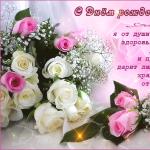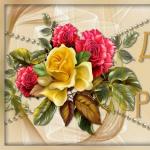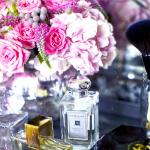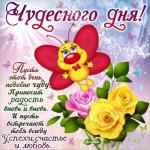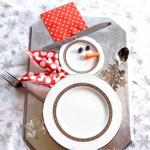Crafts from a quilling ship. How to make quilling crafts
Fishnet quilling crafts will decorate any window sill, wall, desk or crib. Sophisticated postcards, panels or small quilling souvenirs will surely appeal to young connoisseurs of beauty and those whose hearts always yearn for a fairy tale.
Monks of medieval Europe are considered the creators of the first quilling crafts. By trimming the gilded edges of religious books and rolling paper strips at the tip of a pen, they made medallions that imitated gold miniatures. No wonder the word "quill" is translated from English as "bird feather".
Quilling is a unique technique that will help you convey the airiness and lightness of lace patterns.
To create crafts from quilling, you will need the following tools: awl, tweezers, scissors, glue, as well as a pencil, compasses, ruler template.

Before starting work, familiarize yourself with the basic elements of quilling, the so-called modules. It is the different shapes of paper strips twisted into spirals that will allow you to achieve the desired pattern.

Quilling angel
A stylish pendant or a tiny souvenir for a friend - an angel using the quilling technique will move anyone. In my opinion, a great gift if you are going to visit.
All parts of the craft, except for the head, consist of “free spiral” modules.
1. First make an angel sleeves: take four strips of blue color 21 cm long, glue together. With the help of an awl, twist it into a tight spiral, and then dissolve it a little - to a diameter of 20 mm.
You can use special quilling paper, or cut the colored double-sided paper yourself, as I did.


2. For dresses angel you will need:
- three "free spiral" modules, consisting of eight glued blue strips, each 21 cm long. The diameter of the spiral on the ruler must be 32 mm;
- two modules "free spiral", consisting of two glued blue strips, 21 cm long. The diameter of the finished spiral should be 10 mm.
3. Pens- these are 2 loose spirals of 2 glued light pink strips 21 cm long each. The spiral diameter is 10 mm.
4. To create wings toys, make 2 "free spiral" modules, consisting of 4 glued white strips, 21 cm long each. The diameter of the spirals for the wings is 26 mm.

5. For making heads make a tight spiral of 10 light pink strips 21 cm long.
Important! Remove each spiral from the template ruler with tweezers. Carefully grease the edge with glue so that the module does not unwind.


6. For all spirals, except for those 10 mm each, give the shape of a droplet.

7. Tiny spirals for the dress will remain unchanged. And pink - for pens - you need to give the appearance of curved droplets.

8. Assemble the angel: glue all the parts with PVA glue, as shown in the photo. Styrofoam is ideal as a stand - it is easy to stick pins into it.

9. Insert a loop between the head and wings. The angel is ready!

And here are a few more quilling angels - for everyone who knows the technique thoroughly.


Quilling snowdrops. Beautiful spring card
To make a flower card with snowdrops, you will need: colored cardboard, an openwork napkin, PVA glue, a long toothpick, white and green quilling paper.

1. On a toothpick, twist three modules under the name "free spiral". These are snowdrop petals.

Form three basic "eye" elements from them by clicking on the spiral from two opposite sides.

2. Take a green strip of paper and form a tight spiral out of it. Using the blunt end of the skewer, squeeze out the middle of the spiral, thus forming the "cone" element.


3. Collect the snowdrop flower: glue the petals and place them in the middle of the cone. If you want to make an unblown bud, place only one petal in the cone.
4. Cut thin stems 8-9 cm long from green paper.

5. Cut off ¼ of the lace napkin, remove the sharp corner and make a basket blank, bending the edges in the middle.

6. There is very little left - to stick all the details of the bouquet on a cardboard blank and sign the postcard. I am sure that the hero of the occasion will be very happy with such a touching gift: beautiful flowers in the quilling style.

Miniature flower in a pot using quilling technique
This tiny flowerpot from the "mi-mi-mi" area will surely delight girls. So why not make a pleasant surprise for your beloved friend or deskmate?
In addition to pink, green, white and orange paper for quilling, you will need: a wine stopper, a toothpick, PVA and scissors.
1. From a cork and a toothpick, make such a tool for winding paper.

2. Cut six orange strips and twist them into spirals, dissolve a little.

3. Press the spirals from one side, giving them the shape of droplets.

4. Glue three white stripes 7 mm wide and make a fringe. This is the core of the flower.
5. Make a spiral of two green strips, dissolve and squeeze from both sides. Thus, make 2 sheets.
6. From a strip of green color 6 mm wide, make a tight cone-stem.

7. Make a flower pot from three glued pink strips 1.5 cm wide. Roll a tight roll, squeeze the middle down. Pour PVA glue to the bottom, glue a circle of paper.
8. Make the herb in the same way as you made the core of the flower. Strip width 10 mm.

9. And now the best part - assembling the flower.

Here it is - a decorative quilling flowerpot and a new gift for a friend.
What else can be done from quilling
Quilling is always bewitchingly beautiful and very pleasant. Any quilling craft gives a feeling of sophistication, airiness of the depicted object or drawing. See what unusual products can be made using the paper rolling technique.
Animals, birds and insects. There are many photos with quilling products that even a beginner can handle:

Quilling - wonderful things made of paper. Comments: LiveInternet - Russian Online Diary Service
As promised, I am publishing a small master class on creating lilies using the quilling technique.
For work you will need:
-instrument,
-tweezers,
- a ruler with circles of different diameters,
as well as scissors, a ruler, and PVA glue
In this work, strips 3mm wide of white, light green (pastel colors), and bright green colors are used, as well as for the middle of a strip 1.5mm wide in orange color.
For the petals, we need a white strip 60 cm long. We spread the roll on a diameter of 24mm, glue it and shape it as shown in the picture.
Scotch reel eights
We take the waste material-reels from the scotch tape)
We glue the outside and inside with corrugated cardboard.
On one side, we hide the ends with tight rolls. in the quilling technique.
We glue the blanks together.
We glue the figure eight on a white sheet of Whatman paper, cut it out along the contour. Congratulations and wishes will be written here.
| 0 | 0 | 0 |

Snowdrops using the quilling technique - Decor and interior items - Needlework - Minsk woman: being a woman is interesting!
| 0 | 0 | 0 |

Snowdrops using the quilling technique - Decor and interior items - Needlework - Minsk woman: being a woman is interesting!
Snowdrops using the quilling technique - Decor and interior items - Needlework - Minsk woman: being a woman is interesting!
| 1 | 0 | 0 |

Snowdrops using the quilling technique - Decor and interior items - Needlework - Minsk woman: being a woman is interesting!
Snowdrops using the quilling technique - Decor and interior items - Needlework - Minsk woman: being a woman is interesting!
| 0 | 0 | 0 |

Snowdrops using the quilling technique - Decor and interior items - Needlework - Minsk woman: being a woman is interesting!
(difficulty ***)
The work was carried out using frames of various types for taking "impressions", as well as a wooden frame for assembling masts.
Materials:
- Quilling paper strips 2 shades of brown, 3 shades of red, beige, 1.5 mm wide
- Brown pastel paper
- Wooden skewers for barbecue
- brown nail polish
- toilet paper
- film for food
- PVA glue
Process of creation:
- The stern consists of four parts: two identical side, rear, deck and bottom, as well as internal struts. To create the side parts, wind about 600 elements of the "Eye" quilling made of brown paper (see table).

The consumption of elements directly depends on the size of the dense workpiece, which is needed as an impression of the stern, to give the lateral parts a rounded and curved shape.

Ship blank. Side view. f = 4 cm, e = 0.8 cm

Ship blank. Back view. d = 3 cm

Ship blank. View from above
A dense blank should be glued from toilet paper. To do this, it must be folded into two or three layers, cut out the shape according to the size of the bottom, coat it with glue and cover it with the next layer on top. Gradually, the cut out figures should increase in size and smoothly go to the deck (see diagrams)



Method of stacking elements for the side parts of the stern
After complete drying, wrap the workpiece with cling film and, on the basis obtained, glue the previously obtained elements in a given sequence.

Carefully remove the finished side parts of the stern of the boat from the cling film. Additionally, you can manually add roundness to the shape of each of the parts.

Deck drawing. a '= 21.5 cm, b' = 4.5 cm

Bottom drawing. a = 17.5 cm, b = 3.5 cm
Cut the bottom and deck out of brown pastel paper according to the drawings.



Draw the blunt end of a ruler (scissors, knife, etc.) along the dotted lines to make it easier to bend the edges.


Glue one side part to the bottom first. Apply glue to the folded edges of the bottom. Connect the side section to the deck in the same way, it should be 5 mm below the edge of the side section. It is worth noting that the curved edges of the blanks and the bottom and decks look towards the inside of the stern.

Before connecting the resulting structure to the second side part, it is necessary to create internal struts for greater stability and rigidity of the base of future masts. The spacer is a part of a wooden skewer, on both sides of which two dense rolls are glued in. Attention, before twisting the rolls, make sure that the central hole of the element will be large enough to string it onto the skewer. Or use the latter as a tool.


After assembly, grease each roll with glue and leave to dry. Glue two spacers into the stern cavity. Press down gently with the index and thumbs of both hands. Connecting the struts securely to the deck and bottom of the ship.

The next step is to connect the resulting structure to the second side of the stern. Hold in hands until completely dry, fixing in the desired position. At the end, add the rear part of the stern, assembled according to the scheme from the same elements of the "Eye" quilling as the sides.

Lay a border around the perimeter of the stern - a strip of brown paper glued in two layers. Because the bead is a curved line, along the entire length of the strip, it is necessary to make cuts about 2 mm deep to give it a smooth bend.

Lay brown rolls on top of the curb.
Next, glue the cut and folded "step" into the rear part of the deck so that it protrudes about 5 mm beyond the rear part. The step is a rectangle with double projections added along the width on both sides, which must be folded.


Bottom and three rows above the step, overlap with "Square" quilling elements, end each row on both sides with a Triangle.

Then glue the back part, as shown in the photo, with a curled strip of paper, as well as the junction of the two side parts in front. Inside the step, also decorate the Square with quilling elements. Put another border on the top - a strip of paper folded in half.

The sails are assembled according to the scheme of quilling elements Eye, Drop, in the form of a trapezoid. Right-angled triangle. To give it a curved shape, the assembly should be done on a template - a cylinder glued from thick paper (for watercolor, for example), wrapped in cling film. In total, you need to create five standard sails, two triangular and one trapezoidal.

Shish kebab skewers are used for the masts. In the presented version, the lengths of the masts are 15.5 cm, 25 cm, 20 cm, respectively, counting from the bow of the ship. Each skewer should be coated with brown nail polish and allowed to dry.

Then each sail must be attached to the base. To do this, take a strip of paper no more than 1 cm long, put a wooden base in the middle of the strip, and glue the ends together.

You need to make up to 7 such hangers, depending on the size of the sail.

Main sail drawing. General and side view. 1 mast: 1 sail: a = 4.5 cm, b = 6.5 cm, c = 6 cm, 2 sail: a = 4 cm, b = 5 cm, c = 5.5 cm, 3 sail: a = 3 cm, b = 4 cm, c = 4 cm; 2 mast: 1 sail: a = 4 cm, b = 5.5 cm, c = 5.5 cm, 2 sail: a = 3.5 cm, b = 5 cm, c = 5 cm

Drawing of the sail on the bow of the stern. 1) a = 8 cm, b = 5 cm, 2) a = 9 cm, b = 5.5 cm

Drawing of the sail at the rear of the stern. a = 4.5 cm, b = 7.5 cm, c = 6.5 cm
Glue strips of red paper to the edges of the sail, as shown in the diagram.


Between the two red stripes, glue a beige strip so that it continues the bend line of the sail.

Glue each sail to the mast using a multi-purpose glue, a drop of which is applied to the middle of the wooden base.

For reliability, the junction should be fixed with a beige strip about 4 cm long.

To do this, lay the mast in the middle of the strip, bend the ends crosswise on the basis of the sail, pass between the suspensions and the sail canvas and glue the ends of the strip on the mast. Add some all-purpose adhesive if necessary.



Thus, assemble one mast with three sails, one with two sails, a rear mast, two sails in front. Glue the sails of the upper tier to the wooden base of the previous tier for "light tails". Fix the lower largest sails on the rolls standing on the stern curb

For stability, glue a roll on the base of each mast, the tip of the masts is a cone.

The bowsprit on the bow of the stern can be fixed with two combined Luna quilling elements.
The assembly is over, the ship is ready.
And let your ship rush in full sail to new, wonderful shores of mysterious countries.
Master class Quilling: Secrets of the seabedThe quilling is sinking, the quilling is sinking .... to the seabed!
This time I wanted to do without the "lessons", but it didn’t work. I even had to change the name of the work. Now you will understand exactly why "Secrets of the Seabed".
So let's start diving.
Starfish and pebbles.
MK in the form of TC.
I made all the inhabitants, and the most dreary thing is to roll 8-10 strips of stones, I left them for last. And suddenly it dawned on me: I figured out how to make a pebble in 30 seconds. I am sharing my first secret with you.
If we need to get a small tight roll of 2-5 strips, then we can use 1 method. To make a large roll of 6-10 strips, the second method is suitable. You have no idea how quickly I rolled the stones! These methods can be used not only for making pebbles, remember all our flowers with tight rolls!
The result is in front of you! The pebbles flew out like hot cakes, the main thing is to glue them correctly. Do not be alarmed when at the end of twisting the "tails" from the stripes will seem to bounce off, the last strip that we glue below will press down and stick them. That's how my laziness pushed me to opening!
The second secret: I twisted a strip smeared with glue at once.
The traditional method: twist the roll and then squeeze out, is suitable for short tubes, but I could not get a long tube this way.
Sea urchin, even two.
How I did it is the third secret. If you glue the black fringe just like that, then there are not many black needles, and an additional narrow strip gives the necessary volume to the roll.
Twisted, folding the blanks "in a pile".
Happy viewing!
Actinia is a coral polyp.
Pearl oysters. The shell is made of white corrugated cardboard.
Age: 6 years old
Teacher: Krupenko Tatyana Sergeevna, teacher MBDOU CRR kindergarten №7 "Belochka", Zverevo, Rostov region
Quilling- This is a fairly ancient art, it appeared in the 15th century.
The name itself - quilling, comes from the English word quilling, which means a bird's feather. This art is based on twisting colored stripes (paper rolling) and creating quilling elements from them. Further, various figures are assembled from these elements, both in the plane and volumetric.
You can use a needle, thin awl, toothpick, or ballpoint pen paste to curl strips of paper. And also we need scissors, tweezers (for precise attachment of curls to the base), PVA glue or some other thick and durable one. It is better to buy glue in a bottle with a spreading device.
The main material for quilling is paper.
The blue surface of the sea,
Quietly rustling foam
Light sailboat rocks
Like a little child.
Sings softly a song
Rustle of wind over the wave.
You sparkle in the sun, sail,
Slim, red, mischievous.
Tasks:
To acquaint children with the basic concepts and basic forms of quilling.
Develop fine motor skills of hands and eyes.
Develop the child's artistic taste, creativity and imagination.
Learn to create gifts with your own hands.
This work will require:
Glue (better than PVA-M),
Tweezers, stripes of white, blue, brown, red, yellow
Toothpick, frame
Quilling strips white, yellow, red, brown blue - 3 mm
Progress
In the center of the frame, we begin to lay out according to the "Sailboat" scheme
We take a brown or yellow strip, twist it diagonally and stretch it, (element of the “cone” quilling technique) we get a “mast”.
In order to get the hull of the sailboat, we take 5 strips (yellow or brown), bend it in half, fix it with glue along the fold line, make a free sagging of the strips and at the end fix all the strips with glue, twist the ends with the blunt part of the scissors.
.jpg)
In order to get the sails, we use the same execution technique (using red or white stripes).
.jpg)
"Waves". We carry out using strips of white and blue.
.jpg)
We take 8 strips, glue the strips in the center, twist the ends with the blunt part of the scissors. Place the “waves” at the bottom of the “Sailboat.” The “wave” can be performed using the “free spiral” quilling technique.
.jpg)
In the upper left corner we place a sun made of yellow stripes, a “free spiral” and around we place “rays” of yellow stripes, twisting the ends of the stripes.
.jpg)
We twist the white strip ("free spiral" quilling technique) we spread the clouds
.jpg)
A wonderful gift.
Can decorate the group room and remind you of summer.
.jpg)
